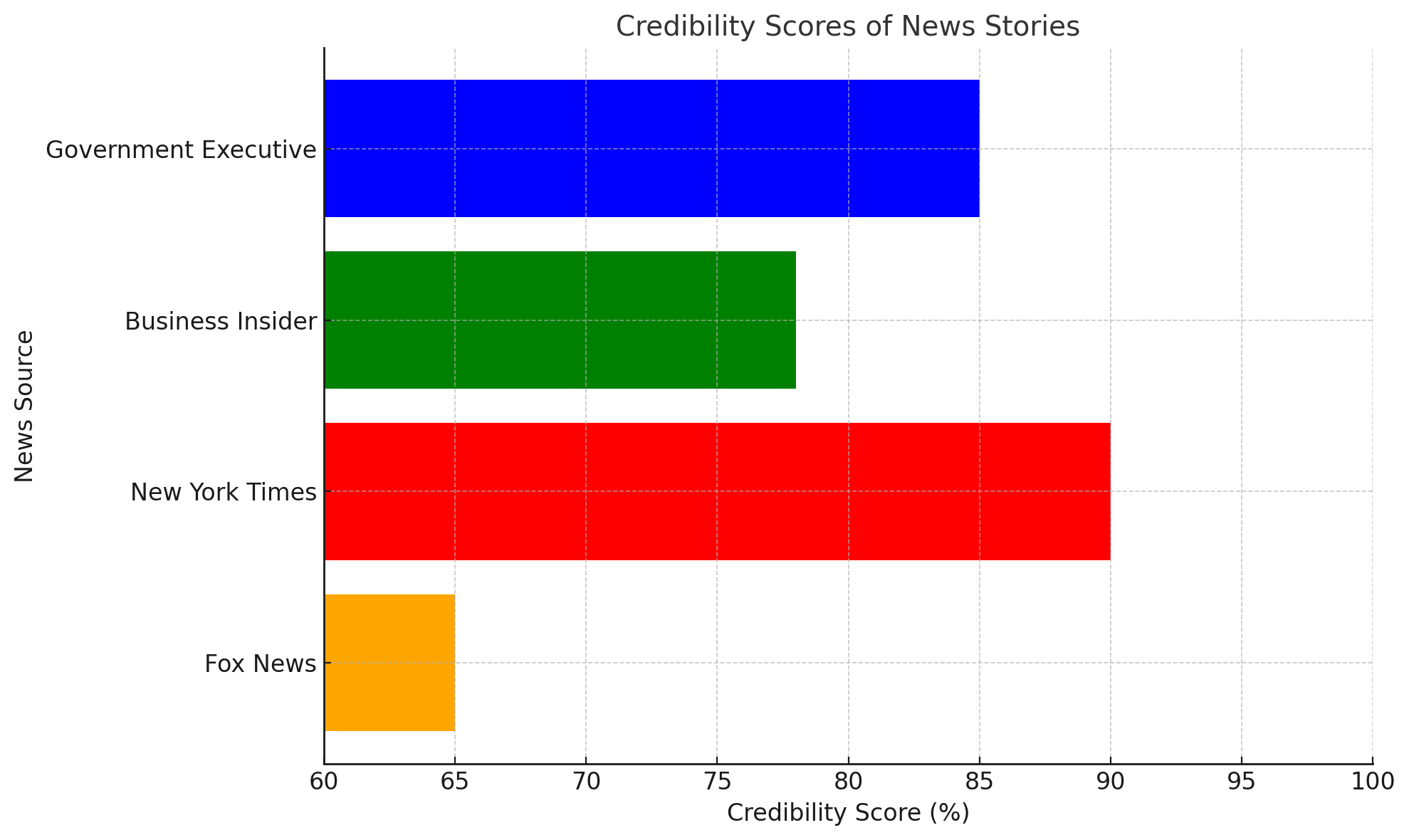News Source Analysis: Federal Worker Firings Ruling
Comparing coverage of Judge Alsup's ruling on mass firings of probationary federal employees
Story Overview
On February 27, 2025, Judge William Alsup of the U.S. District Court for Northern California ruled that the Office of Personnel Management (OPM) lacked the authority to order mass firings of probationary federal employees. The judge ordered the Trump administration to rescind directives that had prompted thousands of terminations, stating that OPM "does not have any authority whatsoever under any statute in the history of the universe to hire and fire employees at another agency." This analysis examines how different news sources covered this significant ruling that impacts the administration's efforts to reduce the federal workforce.
| Source | Rating | Bias Score | Direction | Professionalism |
|---|---|---|---|---|
|
|
★★★★☆ | 58 (Moderate) | Left-Leaning | 85 (High) |
|
|
★★★★☆ | 60 (Moderate) | Left-Leaning | 78 (Good) |
|
|
★★★★★ | 65 (Moderate) | Left-Leaning | 90 (High) |
|
|
★★★☆☆ | 70 (High) | Right-Leaning | 65 (Moderate) |
Key Comparative Findings
Left-leaning sources prominently featured Judge Alsup's colorful quote about OPM lacking authority "under any statute in the history of the universe," while right-leaning coverage downplayed this language.
Left-leaning sources framed the ruling as a major setback to the administration's agenda, while right-leaning sources emphasized its limited scope and the continued ability of agencies to independently fire employees.
All sources included the AFGE union president's reaction, but left-leaning outlets gave it more prominence and detailed quotes about the "illegal" nature of the firings.
Fox News and Business Insider specifically mentioned DOGE (Department of Government Efficiency) in their coverage, while Government Executive and NYT focused primarily on OPM's role.
Key Highlights:
Bias Analysis: Left-Leaning
The article shows moderate left-leaning bias through its framing of the administration's actions as contradictory and disingenuous. It highlights the judge's most colorful criticisms and emphasizes the administration's changing positions, stating that officials "previously announced" they ordered firings but later denied this in court.
Credibility Score: 85% (High Credibility)
The article demonstrates high credibility through specific, verifiable details about the memos, dates, and procedures. It provides contextual information about the legal arguments on both sides, cites specific sources, and includes relevant quotes from multiple perspectives.
Key Highlights:
Bias Analysis: Left-Leaning
The article shows moderate left-leaning bias through its framing choices. It emphasizes the judge's suggestion that the administration should "do the right thing" beyond his order and gives more weight to union perspectives than government arguments. The closing quote from the union president describing "illegally fired" workers reflects this bias.
Credibility Score: 78% (Good Credibility)
The article provides factual reporting with specific details about the ruling and context about the case. It includes perspectives from both sides, though union viewpoints receive more emphasis. The reporting on potential future testimony from OPM officials adds unique value to the coverage.
Key Highlights:
Bias Analysis: Left-Leaning
The article shows moderate left-leaning bias through framing the ruling as part of the opposition to "drastic overhaul of the federal bureaucracy" and associating the firings with Elon Musk. Noting that the judge was Clinton-appointed provides political context that suggests a partisan dimension to the ruling.
Credibility Score: 90% (High Credibility)
The article demonstrates exceptional credibility through comprehensive, nuanced coverage that clarifies both what the ruling does and does not do. It provides important context about the limited scope of the ruling and explains the remaining discretion of agencies, showing journalistic thoroughness beyond simply reporting the decision.
Key Highlights:
Bias Analysis: Right-Leaning
The article demonstrates right-leaning bias by devoting significant space to a previous ruling favorable to the administration while providing minimal details about this ruling. It frames DOGE positively as fighting "wasteful government spending" and includes an unrelated video about Virginia welcoming federal workers, suggesting the firings create positive opportunities.
Credibility Score: 65% (Moderate Credibility)
The article provides basic factual information but lacks depth on the ruling's specifics, reasoning, or implications. It omits key details present in other coverage, such as the judge's reasoning or quotes from his decision. The focus on the previous ruling favorable to the administration rather than the current one limits its comprehensiveness.
